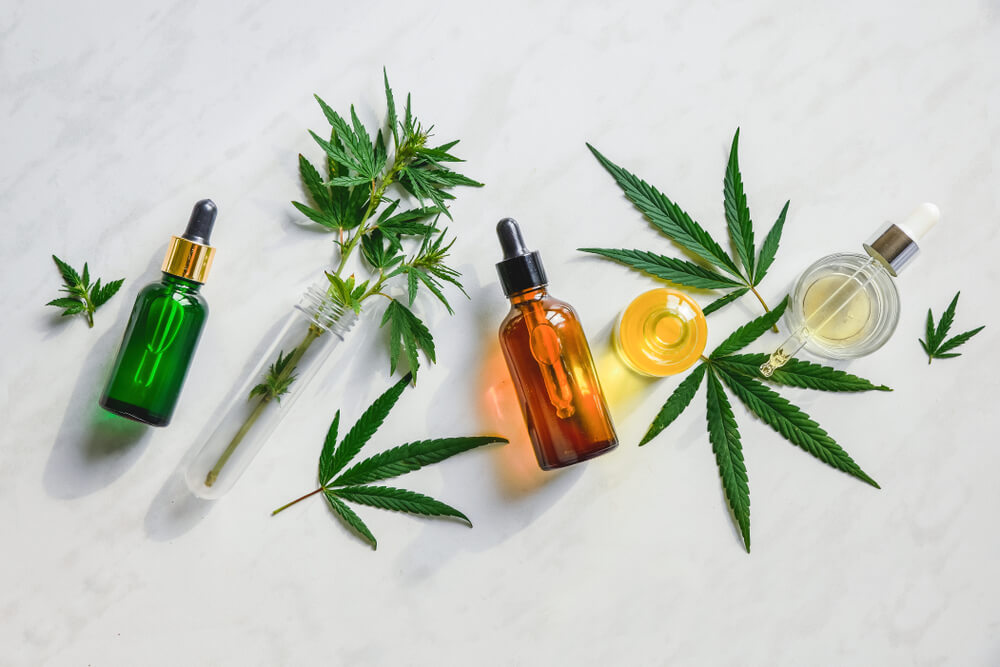Are you wondering if a cannabis tincture is for you? Or are you scouring the internet, looking to upgrade your weed tincture medicating skills?
Either way, this detailed marijuana tincture guide will surely benefit. Here’s what we’ll breakdown in successive order:
Table of Contents:
- What is a Cannabis Tincture: Everything About CBD and THC ratios
- Practical Benefits of Cannabis Tinctures: Short Onset, Long Lasting and Easy Dosing
- How to use Cannabis Tinctures: Dropping, Spraying and as an Ingredient
- Finding the Right Dosage: Why it’s Hard and Steps for Success
- How to Make Cannabis Tincture: A Quick Recipe Using Everclear Alcohol
What is a Cannabis Tincture?
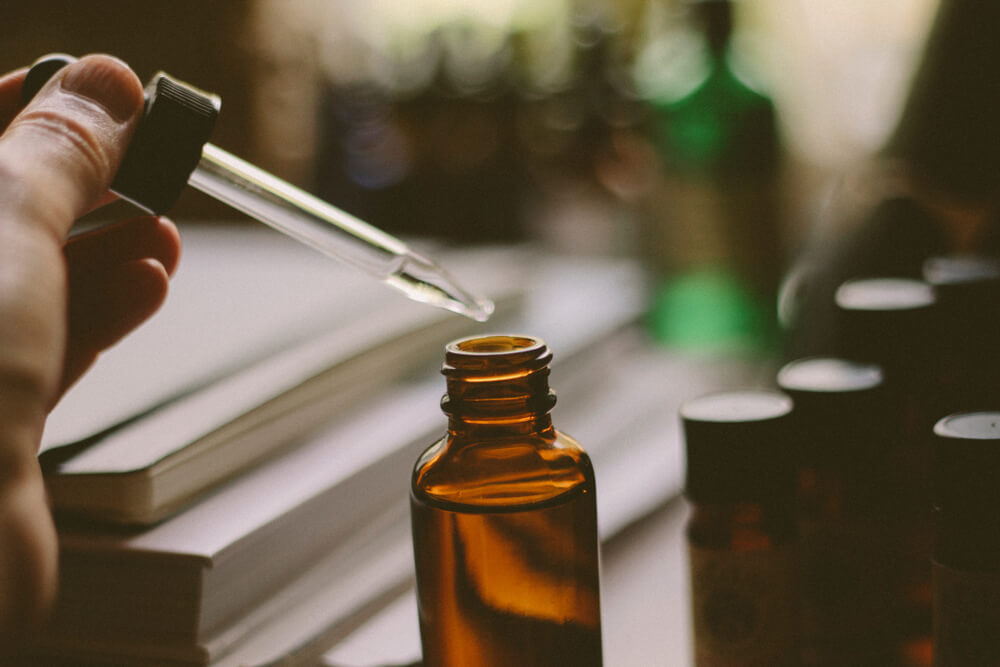
A tincture delivers cannabis without the need for the combustion of smoking. Tinctures are potent liquids of concentrated cannabinoids.
The highly-concentrated tinctures are taken in small doses. Most have a very thick liquid consistency and the bottles come with a dropper to ensure a very small, measured dose.
Most people take tinctures under the tongue (sublingually). For example, the first FDA-approved epilepsy drug, Epidiolex, is concentrated CBD tincture patients take sublingually.
Research has shown that sublingual administration is more effective than other oral dosings like liquid or pill form. This is because it delivers the substance faster and more consistently.
Lots of people also mix tinctures into beverages like coffee or tea or foods like soups. Most people prefer tinctures because they are easy to dose and easy to take.
What’s the Deal with CBD and THC Ratios?
In weed tinctures, cannabis’s many valuable compounds are measured in CBD and THC ratios, such as 20 to 1, 8 to 1 and so forth.
This conveys that a specific tincture holds 20 times the amount of CBD over THC, like how a dry flower strain would have a 20% CBD and 1% THC content profile, such as the AC/DC strain does.
You’re probably wondering – why are cannabis compounds measured in ratios?
The short answer is because of the “entourage effect”.
The entourage effect is a term coined by scientists that conveys cannabis’ greater power in tackling certain conditions when its HUNDREDS of molecules are mixed and matched together in different proportions.
So in other words, ratios are used because of the entourage effect’s medical efficacy, ultimately, providing connoisseurs and patients a guideline of what best tincture to select for their specific needs.
How are CBD and THC Ratios Created?
The manufacturing process determines how cannabis tincture ratios are created, and for every brand it’s unique. But generally, CBD and THC ratios are created in two ways:
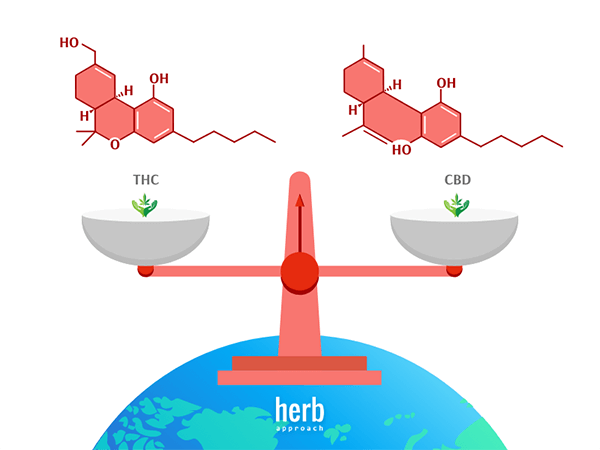
1. Through matching the same proportion of isolate products with a solvent of choice.
For instance, if the end tincture desired holds a 1 to 1 ratio, this method entails of taking identical amounts of THC and CBD isolates in oil form, and then mixing them with glycerin (or another solvent) to make the finished tincture.
2. Through taking a cannabis strain with the exact ratio and using it in the steeping process.
In this method, if the desired tincture ratio is 1 to 1, the manufacturer would take a 1 to 1 strain and put it through the steeping process.
For instance, AC/DC and Harlequin strains hold ratios of around 20 to 1 and 5 to 2. If they were used in the steeping process, this would further translate into the same ratios for their refined tinctures.
Related Article: How to Make CBD Oil Tinctures With Dry Flower and CBD Isolate
How to Produce a Cannabis Tincture
There are several different methods of producing a tincture. All of them involve an extraction process to get the cannabinoid (CBD, THC or others) out of the plant.
The 3 most common extraction methods are:
- alcohol-based (usually ethanol)
- gas extraction (butane)
- carbon dioxide (CO2) extraction
The end result is a concentrated liquid that is used in tinctures, as well as other concentrated cannabis products like vaping liquids and creams.
Comparing the Different Methods
Perhaps the oldest method of making any plant-based tincture is the alcohol method. The cannabis flower is brewed in high-proof grain alcohol like ethanol.
Over time, the cannabinoids (or isolates) stew and infuse into the neutral alcohol. When the alcohol is eventually boiled off, what remains is a highly concentrated bevy of cannabinoids.
CO2 and butane extraction work in much the same way, except that the neutral substance is a gas rather than a liquid like ethanol. But the infusion works the same way.
Tincture producers often add complementary ingredients to the tincture. Think orange or citrus oils to improve the taste. Even coconut oil and other substances are used because they act as a carrier to dilute the tincture to help carry it into the body after.
The Different Types of Tinctures Explained
The 3 most common types of carriers used in cannabis tinctures are alcohol, vegetable glycerin or a form of oil. Each has its pros and cons.
In all of these cases, the cannabinoids bind to the carrier to help deliver it to the body. It is important to know the type of liquid that is used in your tincture.
1. Alcohol-based cannabis tinctures

Let’s remember that marijuana wasn’t always illegal in the U.S. It regularly lined pharmacy shelves and many of those bottles were tinctures.
Alcohol has been used as a carrier for over 100 years. Alcohol is used for extraction and then also mixed back into the concentrate to create the tincture.
The downside is that this mixture usually has a bad taste, so it is not uncommon for the producer to mix honey or a sweet liquid to mask the sharp taste.
The other issue is that if you want to avoid alcohol, this is probably not the tincture for you. Nor is it the tincture for you if you live in California. When recreational marijuana use was legalized in the state, these tinctures were no longer legal.
However, there are pros to alcohol-based tinctures, including their fast absorption and generally longer shelf life, given the alcohol wards off any bacteria.
2. Vegetable glycerin cannabis tinctures
Tinctures made with vegetable glycerin (VG) are increasingly popular. VG is clear and odourless and frequently used in vaping liquids.
From a chemical perspective, VG is a triglyceride so it can carry the tincture across the cell membranes when placed under the tongue.
Tinctures can even be made by soaking them in VG as the extraction method. Much like alcohol, VG is then added back into the concentrate to make the tincture. VG is tasteless, so these tinctures are usually more palatable.
It does have a shorter shelf life than alcohol-based products, and it can’t hold as many phytocannabinoids. So, consumers usually need more of the product to get the desired effect.
The sourcing of VG has become an issue since these products are not regulated by the FDA. Be sure to choose a product that advertises its sourcing methods.
3. Oil cannabis tinctures
Tinctures created with carrier oils like medium-chain triglyceride (MCT) oils, olive oils and others are growing in popularity.
MCT oils (coconut, palm and others) and olive oils are saturated fatty acids and fat-soluble. The body metabolizes them quickly in the liver, so that leads to a fast-acting delivery method for the tincture.
The oils also lead to more even absorption, and they have a neutral taste to boot. The only negative is that the oils have questionable sourcing, just like the VG.
Olive oil can be used to extract cannabis, but it cannot be evaporated off, so tinctures can be made but they cannot be concentrated so you need more to reach the desired effect.
This is ideal in that you get the full spectrum of cannabinoids and terpenes, so the benefits of the whole-plant extract are in the mixture.
The olive oil method is very easy and cost-effective, though, so it is ideal for home use if you want to try your hand at making your own.
Practical Benefits of Cannabis Tinctures
There are a handful of reasons why cannabis tinctures are used over other cannabis products, like edibles, cannabis strains, various concentrates and topicals. Here are the most important.
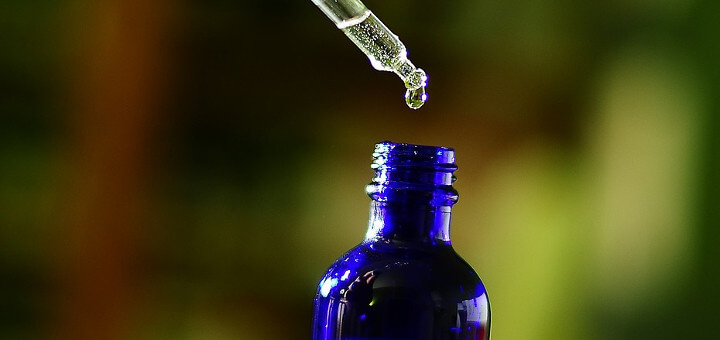
Weed Tinctures Have Faster Onset Times
Since cannabis tinctures can be consumed sublingually – meaning they can be either sprayed or dropped under the tongue – they have the advantage of having a short time to onset (time duration to feel effects).
Especially when compared to marijuana edibles.
How fast you might ask?
Anywhere from 15 minutes to 1 hour, generally speaking that is.
As for eating marijuana edibles, you can expect to wait anywhere from 1 to 3 hours to feel the effects, depending on a lot of factors, like weight, diet, tolerance, and metabolism, of course.
The fast onset of cannabis tinctures is all because of biology.
Simply, by placing or spraying cannabis tinctures under your tongue, the compounds directly enter your bloodstream, instead of having to go through your liver and digestive systems.
Easier to Measure Dosage
Dosing is major advantage when it comes to cannabis tinctures.
With each 1 ml drop, or measured spray, you’re able to better measure your optimal dose.
This proves to be crucial, because finding the optimal dose is a tricky, tricky process that can require constant adjusting day and night. Which is almost impossible with pot edibles, given the challenges of decarboxylation and other processes related to cooking.
For an even easier dosing experience, we recommend you use full spectrum CBD tinctures. Here’s why.
Longer Shelf Life
Another advantage cannabis tinctures have over other products is its LONG shelf life. Long as in a handful of years, at the least.
Important to Note: A cannabis tincture’s exact shelf life depends on what additives and ingredients are used.
Not only does it have a long life-span, but tinctures can also be preserved in environments both cold and room-like in temperature. But, if you’re storing for much later use, a cool location away from direct light and heat is recommended.
And if you’re wondering as to how tinctures have a long shelf life – think of alcohol, the great bacteria fighting solvent.
The Practical Benefits Without Any Compromise to Potency
Lastly, cannabis tinctures have these practical benefits of faster onset times, easier measuring of doses and a longer shelf life with NO compromise to its potency and experience duration.
So in other words, you can expect your experience to last 4-6 hours, which is identical to eating pot edibles.
How to Use Cannabis Tinctures
There are a number of ways of how to use cannabis tinctures, whether they be CBD or THC isolates, or of the Full Spectrum CBD variety. Here are the most effective ways.
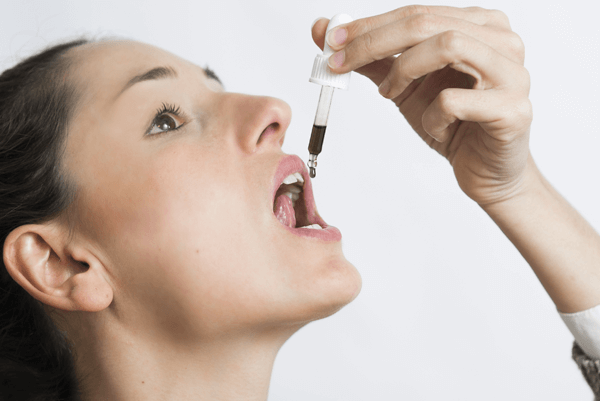
Sublingual Methods
Placing a Drop Under the Tongue
If you choose this method, place a drop of CBD under your tongue so that it’s absorbed in the mucus membranes. Hold it for 60 to 90 seconds before swallowing.
It’s important that you DON’T place a drop on top of your tongue, otherwise, you’ll be swallowing it, which is the ingestion method. If you proceed this way, the onset time can increase to around 2 hours.
Spraying Inside Your Mouth
Before you consume a weed tincture by spraying it in your mouth, first practice spraying it onto a piece of tissue.
Once you’re comfortable, place the nozzle into your mouth, either inside your cheek or under your tongue, and then press it. Make sure you let your mouth absorb the contents for a minute.
To avoid irritation, it’s best to spray in different areas of your mouth each time!
Adding Marijuana Tinctures to Foods and Drinks
If you prefer to eat a nutritious and delicious meal or have a tasty drink, place a few drops or sprays onto the finished entree or beverage.
Need ideas? Try placing a drop onto sauces, salad dressing, smoothies, juices, soups or desserts. Don’t be afraid to get creative and fun with it!
Related Article: What are Edibles? Guide for Dosing and Making Marijuana Edibles
How Much Should I Take? Finding the Right Cannabis Tincture Dosage
Regardless of which weed tincture product you have, one rule is to apply the age-old phrase, “start low and go slow”.
That’s not very scientific, I know. But when it comes to the right cannabis tincture dosage, things get a bit tricky as there’s no “one size fits all” approach.

The reason behind this is because the “right dose” depends on factors like body weight, diet, stress levels, metabolism, tolerance and the symptoms being addressed. Just to name a few.
In addition, cannabis’ compounds follow a confined dosage window, meaning, its medical power is only unlocked above a minimum dose and below a maximum dose. And if this maximum dose is crossed, the medical benefits of cannabis shows to decrease dramatically, while its adverse effects do the complete opposite.
So in other words, if you don’t take enough or if you take too much, you’re likely not going to experience any symptom relief – at the least.
NOTE: As mentioned above, if this is a stubborn issue, we recommend using Full Spectrum CBD as a replacement.
Therefore, to help avoid this marijuana tincture dosage conundrum, we recommend starting with the smallest possible dose and gradually building up to one that relieves your symptoms. Here’s a rough guide to help you experiment:
If you’ve never used cannabis tinctures before, start with a 1.25 to 2.5 mg dose before bedtime for two days.
If it’s not doing the trick, increase the dose to another 1.25 to 2.5 mg for two days, doing so until you see relief and have no UNWANTED side effects.
If the beginning experience proves to be strong and/or if side effects occur, do the opposite and decrease the dose for two days until you’re comfortable.
Recipe: How to Make Cannabis Tinctures
Note: If you’re interested in making CBD oil tinctures instead, here’s 2 recipes – one for full spectrum CBD and CBD isolate tinctures.
Making herbal tinctures is a ritual dating back thousands of years. With cannabis, creating your own herbal tonic abides by the same process as other herbs, where the most popular use everclear alcohol, vegetable glycerine, olive oil or MCT oil.
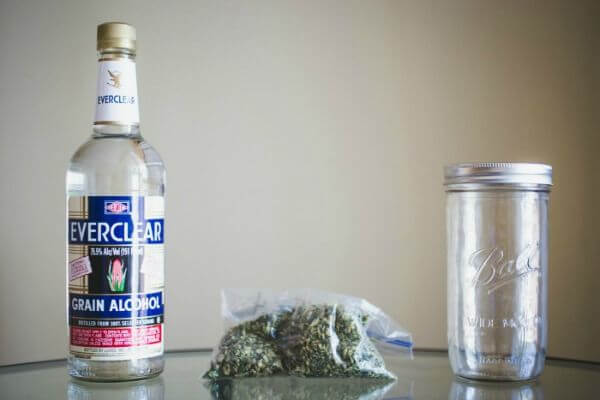
Here’s a basic cannabis tincture recipe that’s extremely easy to make.
Prep Time: 10 minutes | Cooking Time: 110 minutes | Storage Time: At least 6 weeks
Total Time: 6 weeks
Ingredients:
- Mason jar (or another sealable container)
- Oven tray
- Aluminum foil
- Everclear Alcohol
- 1/8 oz cannabis
- Coffee filter
Method:
The first 3 steps have to do with decarbing your cannabis. If you’re familiar with this already, skip to step 4.
1. Preheat your oven to 230 degrees Fahrenheit and then line your oven tray with aluminum foil.
2. Crumble, break up or grind up your cannabis into small pieces and place on the tray. At least an 1/8 ounce is recommended.
3. Bake the cannabis for 110 minutes to convert create the decarboxylation reaction – this means the THCA is being activated and turned into THC (which gets you high!).
4. Put the cannabis in a mason jar or something similar. Pour your drinkable alcohol into the jar to cover the cannabis.
5. Close the jar with a tight-fitting lid and shake it thoroughly.
6. Store the jar in a warm and dark place for 1 month (minimum) as darkness prevents the THC from degrading. Shake the jar every day for at least 2 weeks. The longer you store it the better to get a stronger taste – try to store it for 8 to 10 weeks ideally.
7. Once the appropriate time has passed, strain the leaves out with a coffee filter.
8. Store your finished cannabis tincture in a container. Make sure to keep it far from heat or light sources to preserve it.
Our Marijuana Tinctures Guide Explained
Weed tinctures are just one of the MANY ways to experience cannabis’ healing properties.
They’ve soared in popularity because of its fast onset times, easier dosing measurements and sustained potency.
With this guide of everything cannabis tincture related, you’re sure to make the most of your experience.
Good luck!

